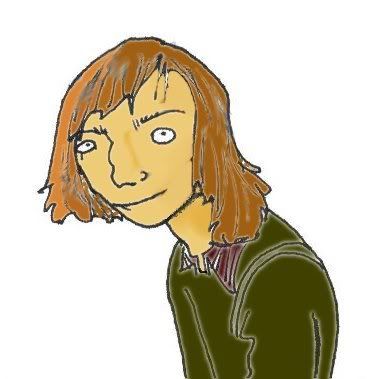Here's an article called How the West Was Won that I wrote last year for my college's short-lived film fanzine. It's on one of my favourite films, therefore it's pretty hefty, so I'm bringing it in two parts.
Three blank-faced men approach a train station somewhere in the Arizona desert. They stroll past the clerk, not sparing a word for him or each other. They simply wait – one cracks his knuckles by the railway, another fills his hat with leaking water, and the third shoos away a fly from his face. As the train rattles towards them, they take their places, guns cocked, on the wooden platform. For over ten minutes, nothing happens. What should be dead space is in fact the now-legendary opening to one of the most atmospheric films ever made – Sergio Leone’s ‘Once Upon A Time in the West’. The sequence ends with all three men dead, after a blink-and-you’ll-miss-it shootout with Charles Bronson’s enigmatic hero, Harmonica. We then cut to a family living in anticipation of the arrival of a new mother. The preparations are cut short, however, when the entire family – including a pre-pubescent boy – are killed in cold blood.
If the trite plot and rising body count make this sound like another Hollywood actioner with video game sensibilities, don’t be put off. Leone directs the entire film with such exquisite style that it’s impossible not to be drawn in. Everything about ‘Once Upon A Time in the West’ seems to have been crafted together with such technical precision that it’s hard to believe Leone never spoke a word of English to his cast and crew. Each frame of the film is instantly iconic, be it the breathtaking desert locations, the hugely memorable score, or Henry Fonda’s against-type casting as the villainous Frank (think Tom Hanks playing Tony Montana and you’re halfway there). Most agree that this is Leone’s masterpiece – more poignant than his ‘Dollars’ trilogy, yet not as exhaustingly complex as his later ‘Once Upon A Time in America’. Here, Leone has taken a simple story (written along with fellow Italian auteurs Dario Argento and Bernardo Bertolucci) and injected it with an irresistible grace – his camera frames everything with an eerie knowing eye, juxtaposing vast shots of an expansive landscape to impossibly close zooms into his characters’ faces.
Complementing Leone’s distinctive visual style is Ennio Morricone’s music. The partnership between Leone and Morricone is one of the most popular and successful in cinema history – it spanned for most of Leone’s career, and the score for ‘Once Upon A Time in the West’ remains one of Morricone’s best. What makes the music so effective is the use of four different themes for each of the four main characters – emphasising the conflict between them, and the film’s theme of conflicting cultures. Jill McBain has a sweeping, romantic string piece to signify her role as hope in a dying world, Cheyenne has an ambling, playful whistle, Frank has a chilling electric guitar, and Harmonica has the ominous, sustained notes of his namesake. Leone once claimed that ‘music is forty percent of a film’ – and the union between film and music here proves that he truly believed this. Morricone in fact scored the film before anything was filmed – in this way, Leone directed the film around the music, which helps to explain the film’s unique power in atmosphere and mood.
‘Once Upon A Time in the West’ takes its time with getting where it’s going; the playful editing of the opening sequence sets a pace that mimics that of a dying man – filled with tense pauses, slow movements and sudden bursts of violent energy (not to mention a noticeable lack of music – instead, a rhythm is created through amplified diegetic sounds). Amazingly, although the film is over two and a half hours long, there are only fifteen pages of dialogue. Characters and events are determined through looks and actions (the film was once described as ‘an opera of stares’). The narrative never feels rushed or forced as it does in previous westerns; the characters are simply, in some way or another, living until they die. Indeed, if the film is about anything, then it must be, as Jason Robards’ outlaw Cheyenne observes, ‘something to do with death’. Death visits the film in all its forms – violent and sudden, treacherous, cold-blooded, slow and inevitable – it serves as punishment or release to several different characters throughout the film. There are many who claim that Charles’ Bronson’s Harmonica is in fact the spirit of death, and not a human being at all. There is much to support this – his entrances into scenes all include the same ominous sweep into the frame, and for all his screen time, his secret purpose ultimately manifests itself as one brutal act of revenge. Educationalist Sir Christopher Frayling points out that Harmonica’s guidance of the camera and his mysterious movements around the rest of the film suggest that he has a supernatural power over time and space.
Subscribe to:
Post Comments (Atom)

No comments:
Post a Comment